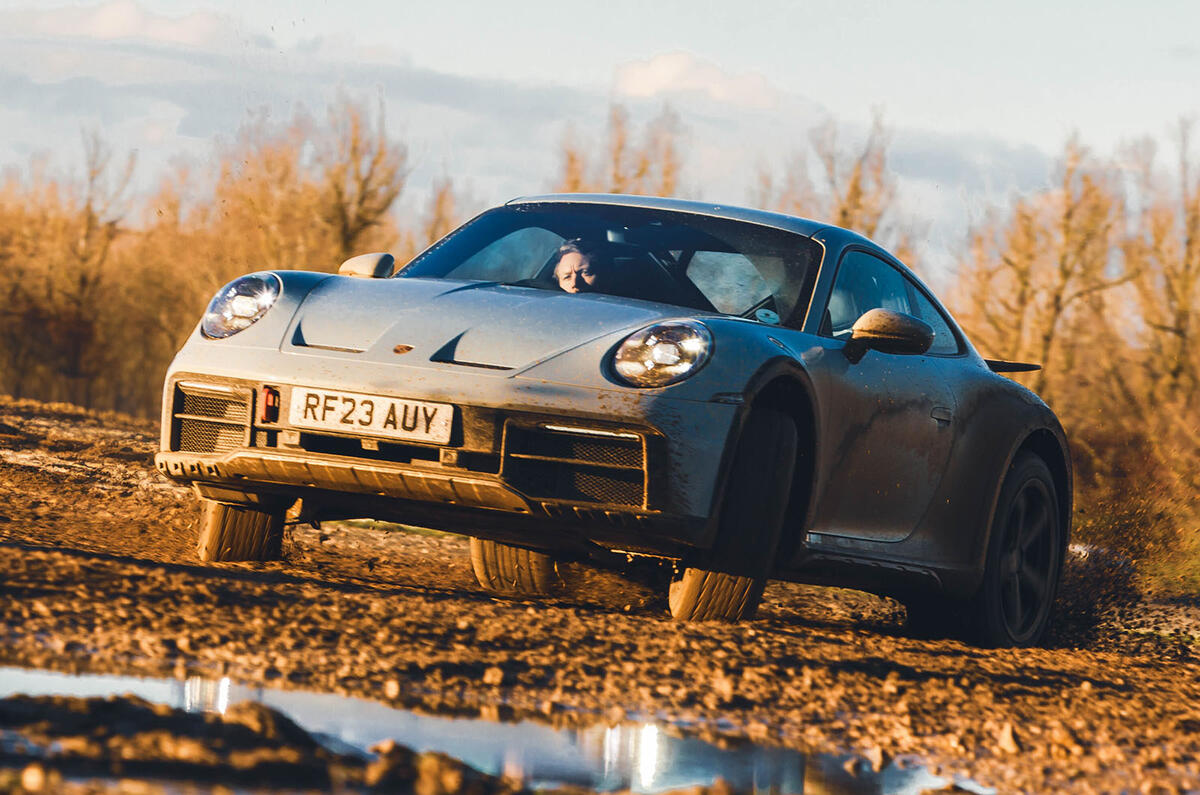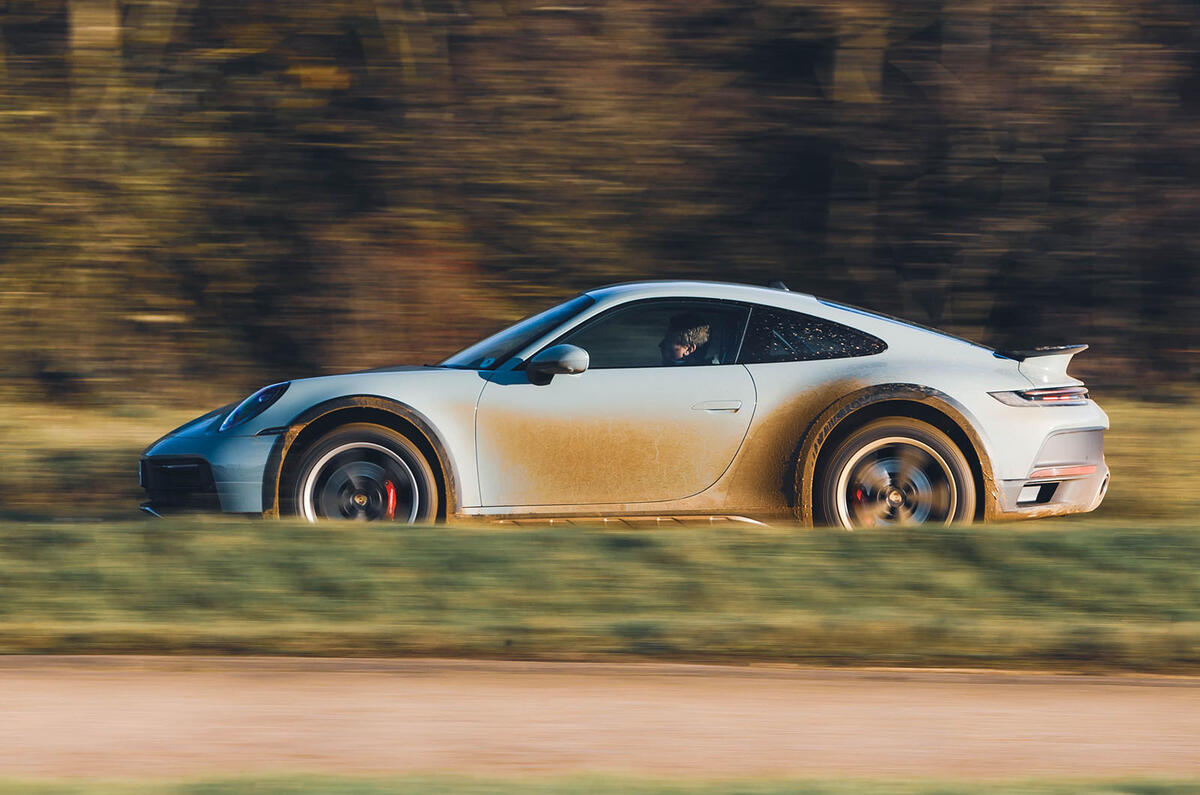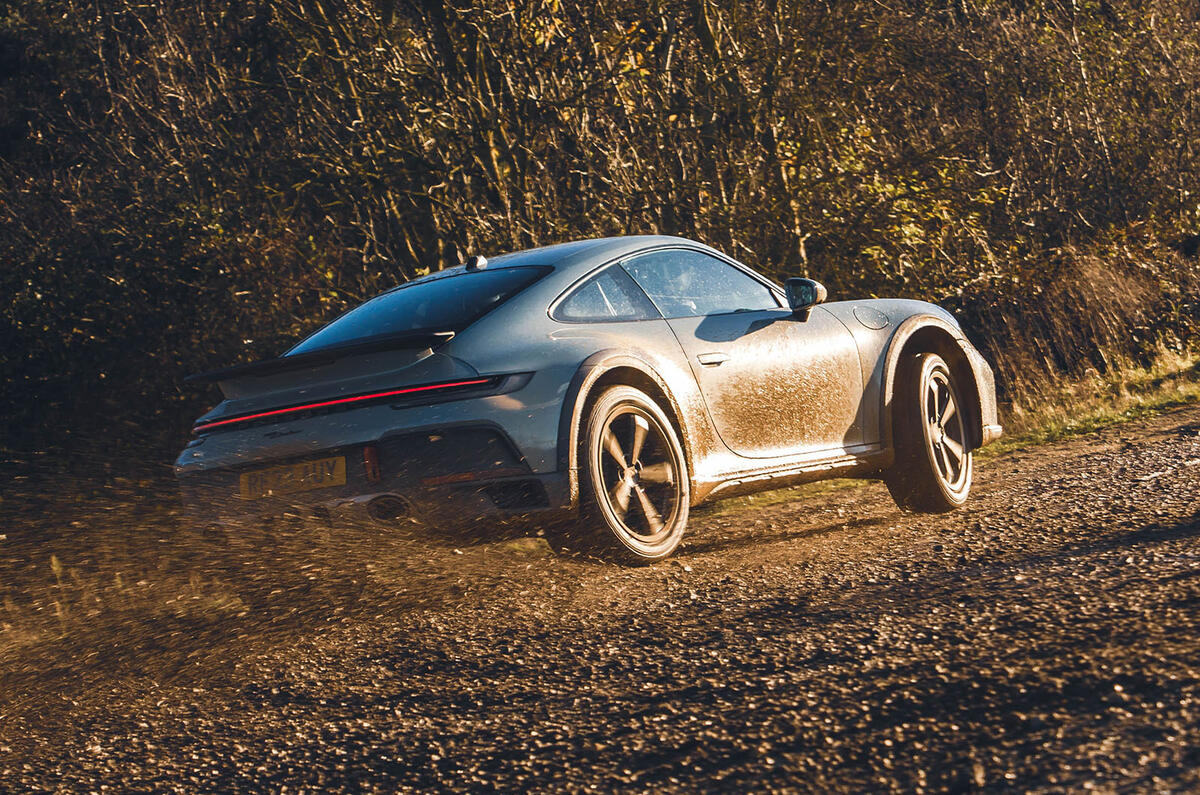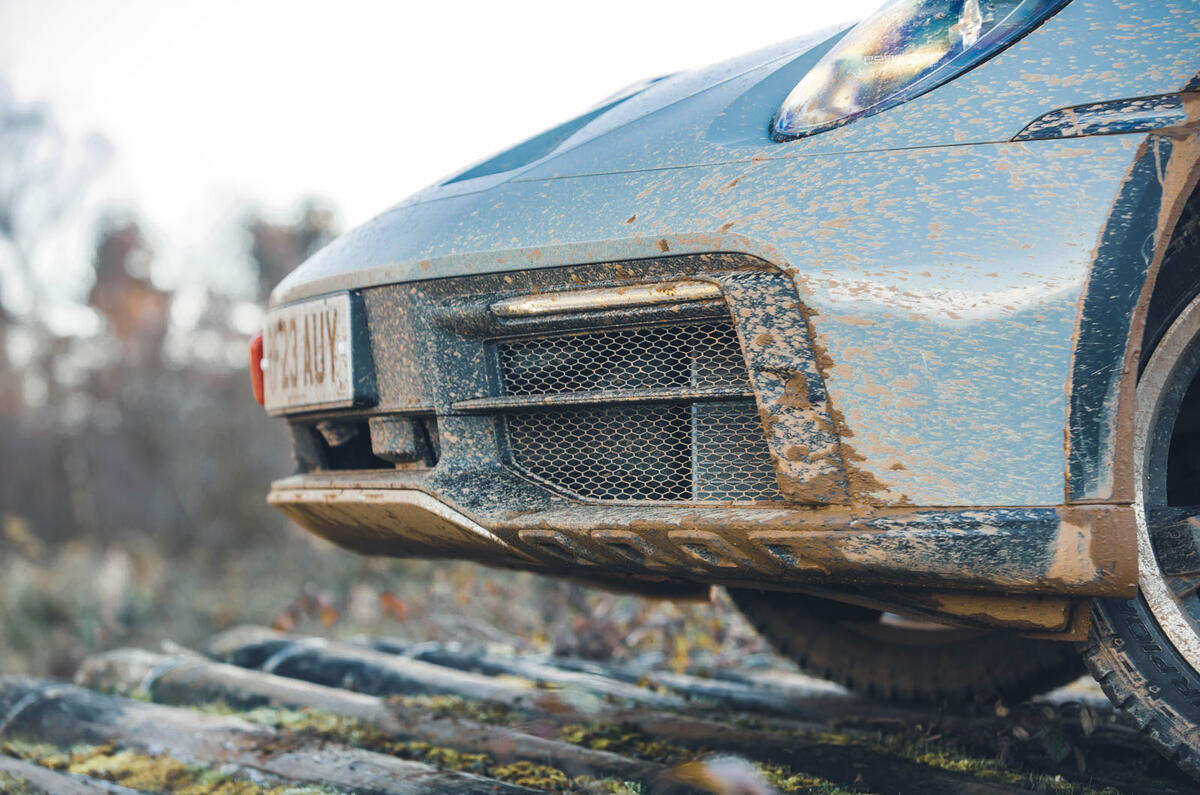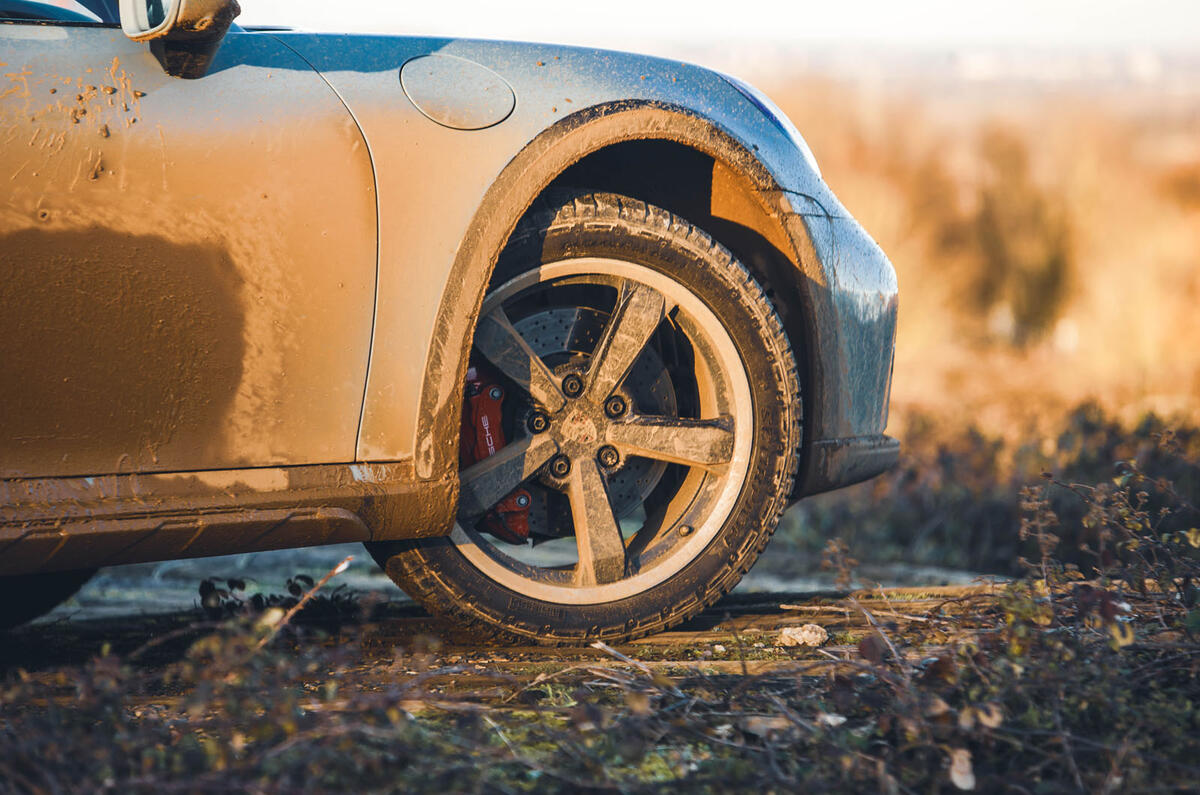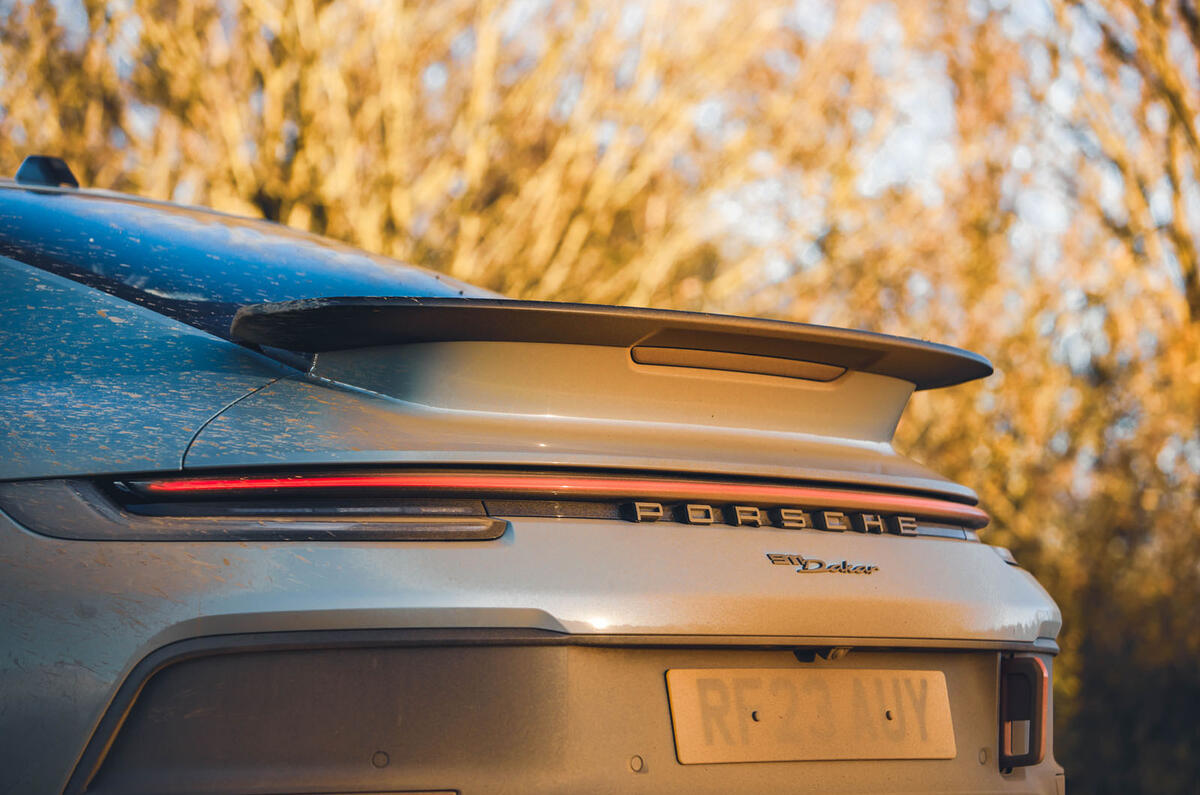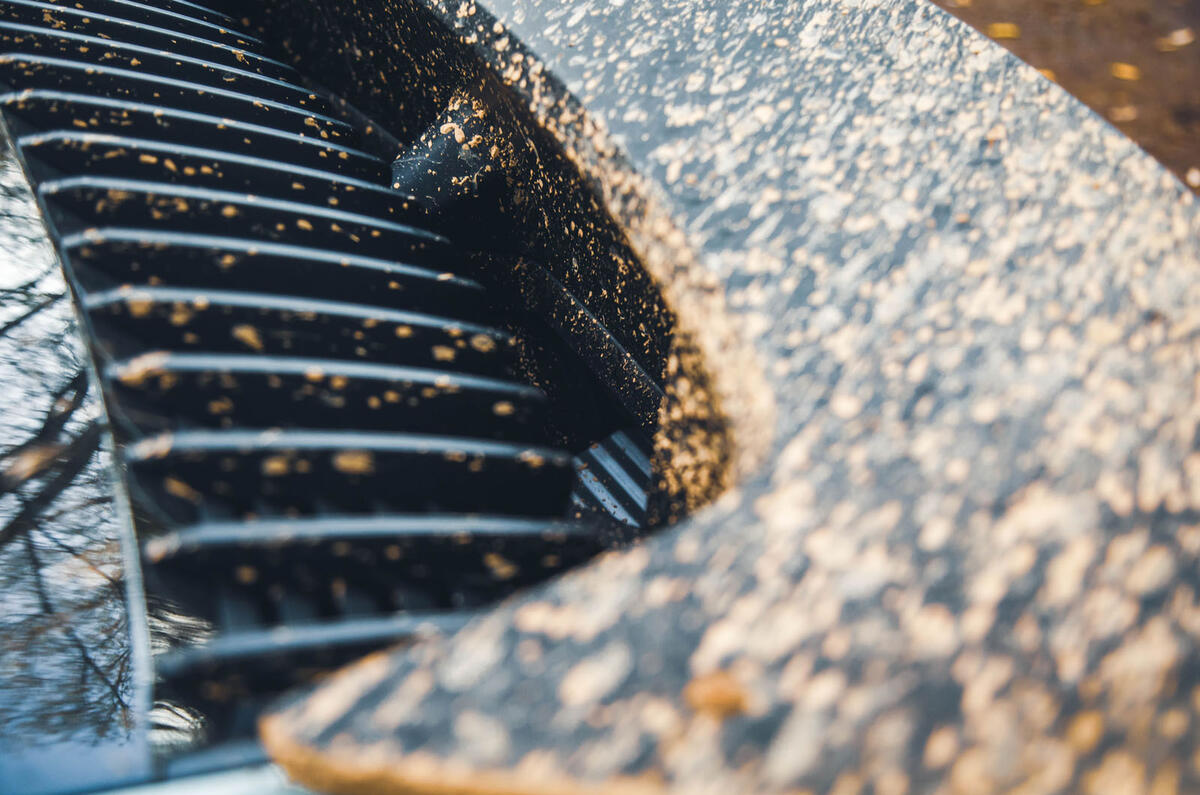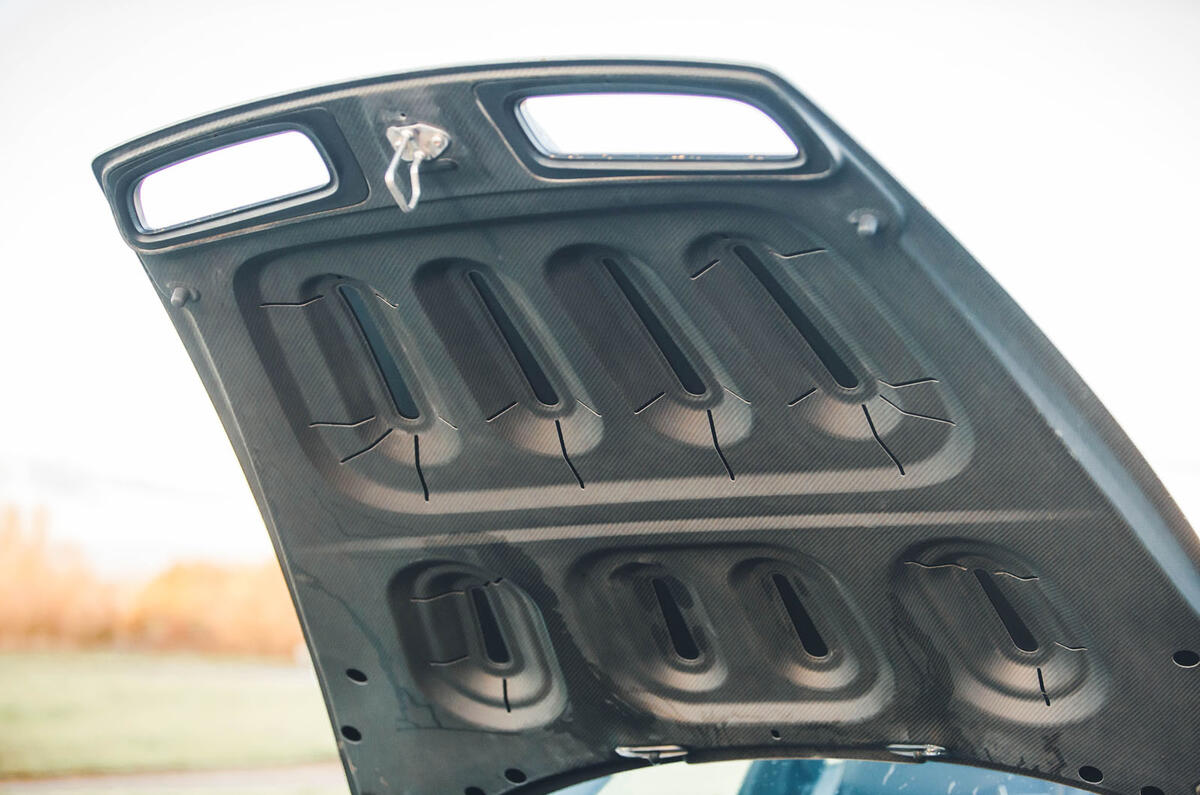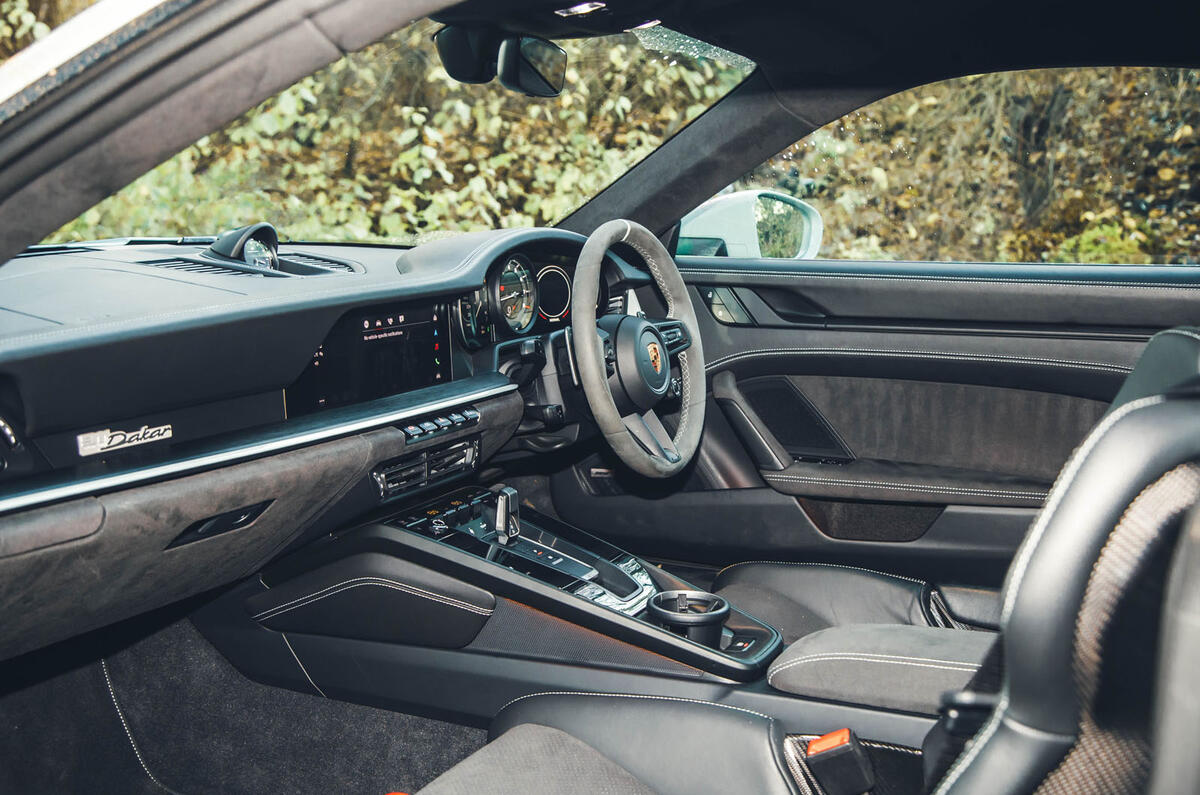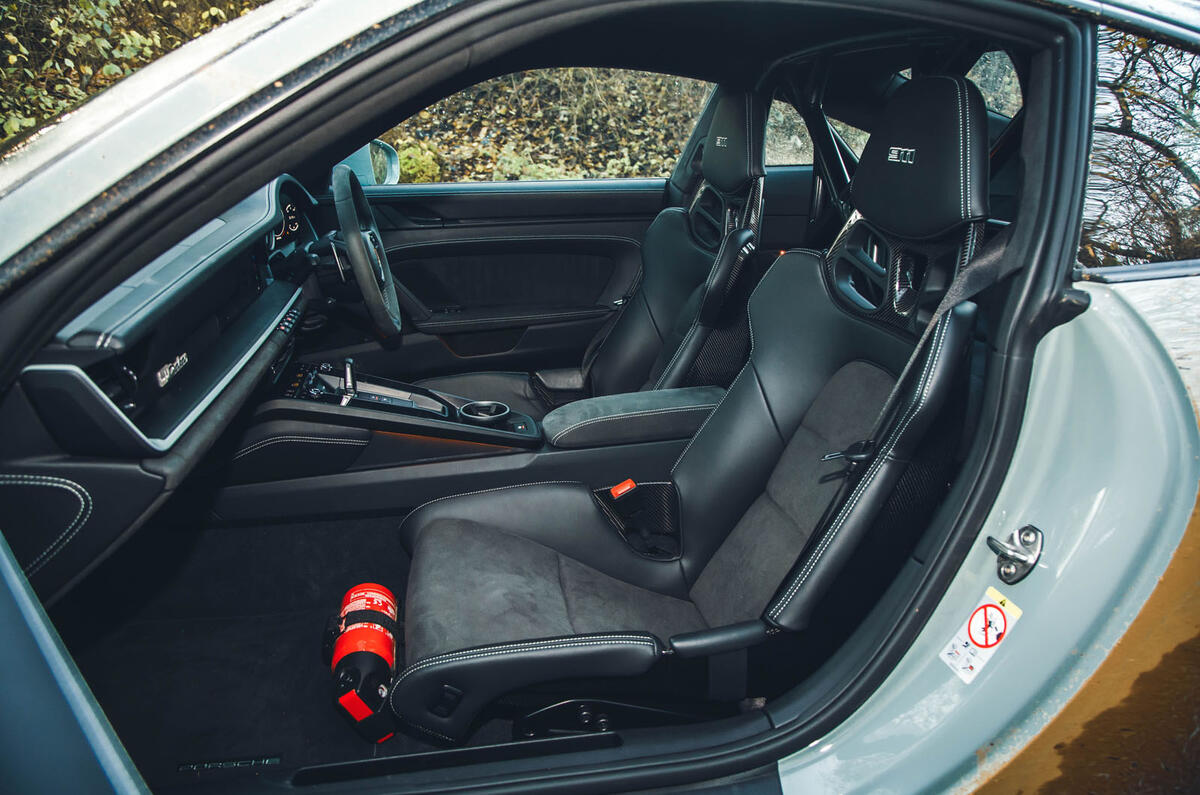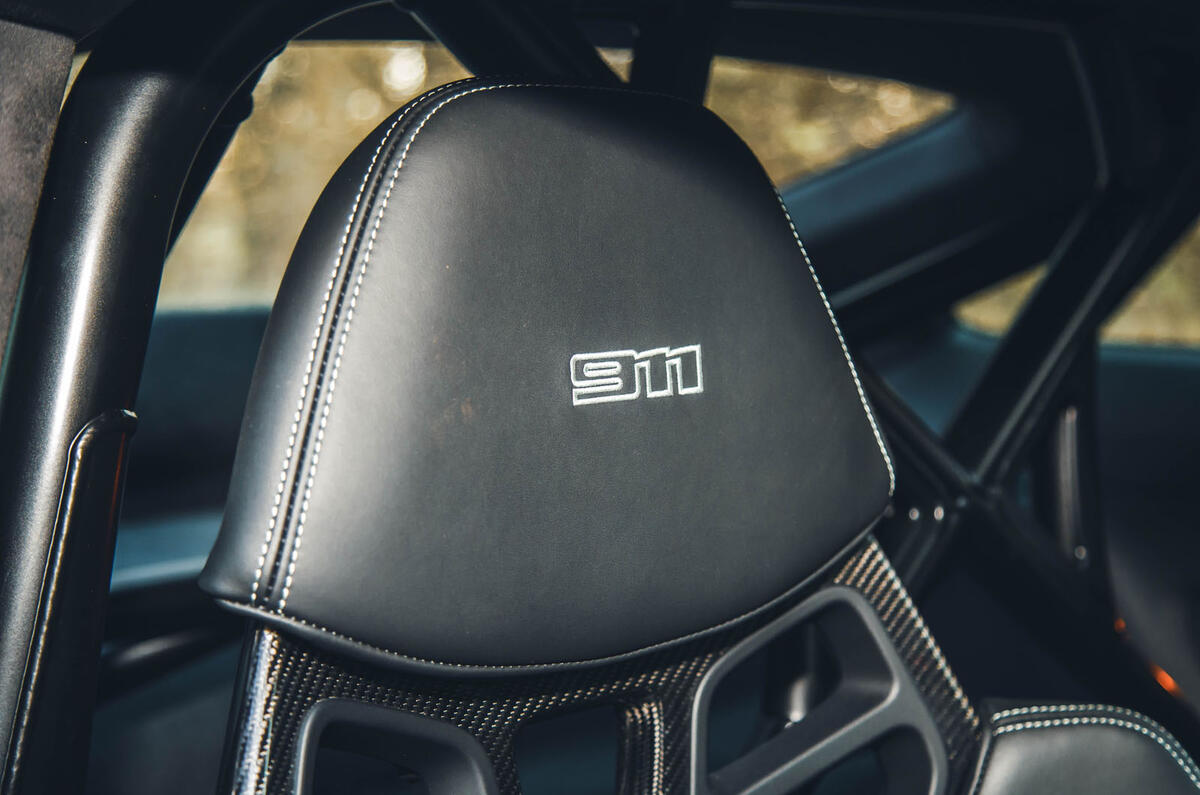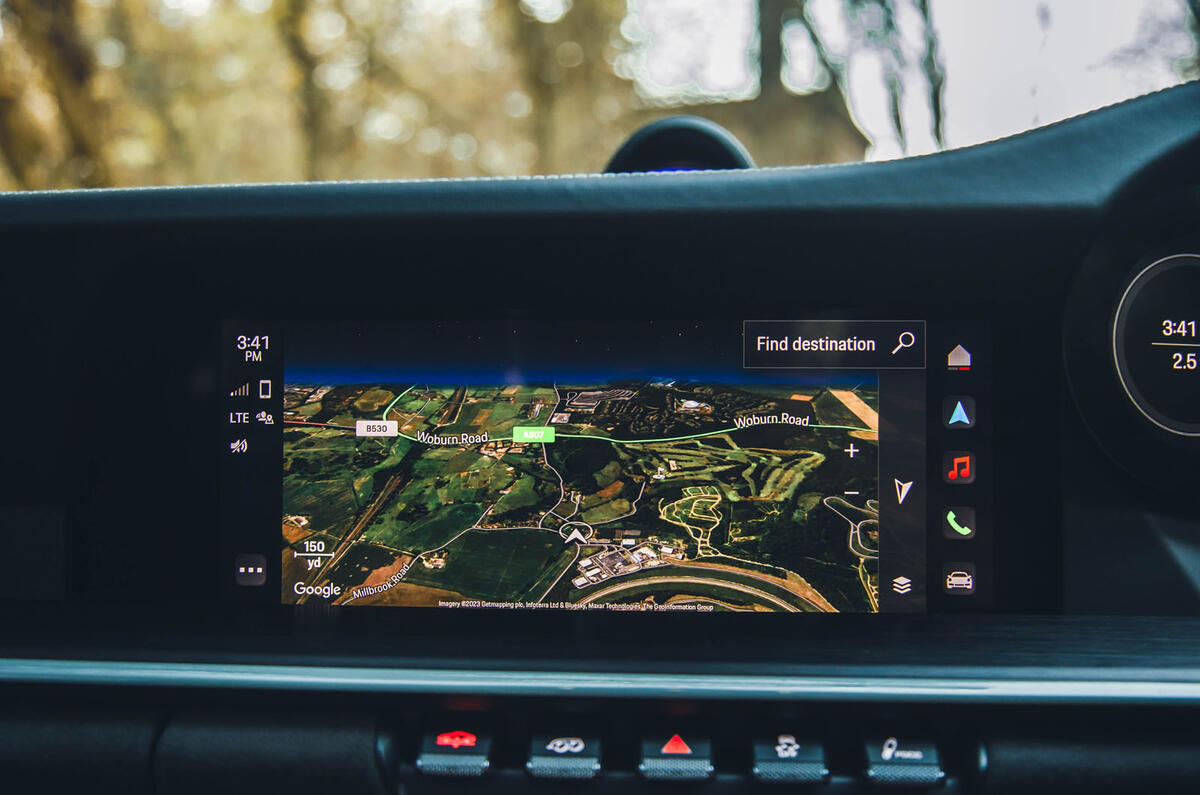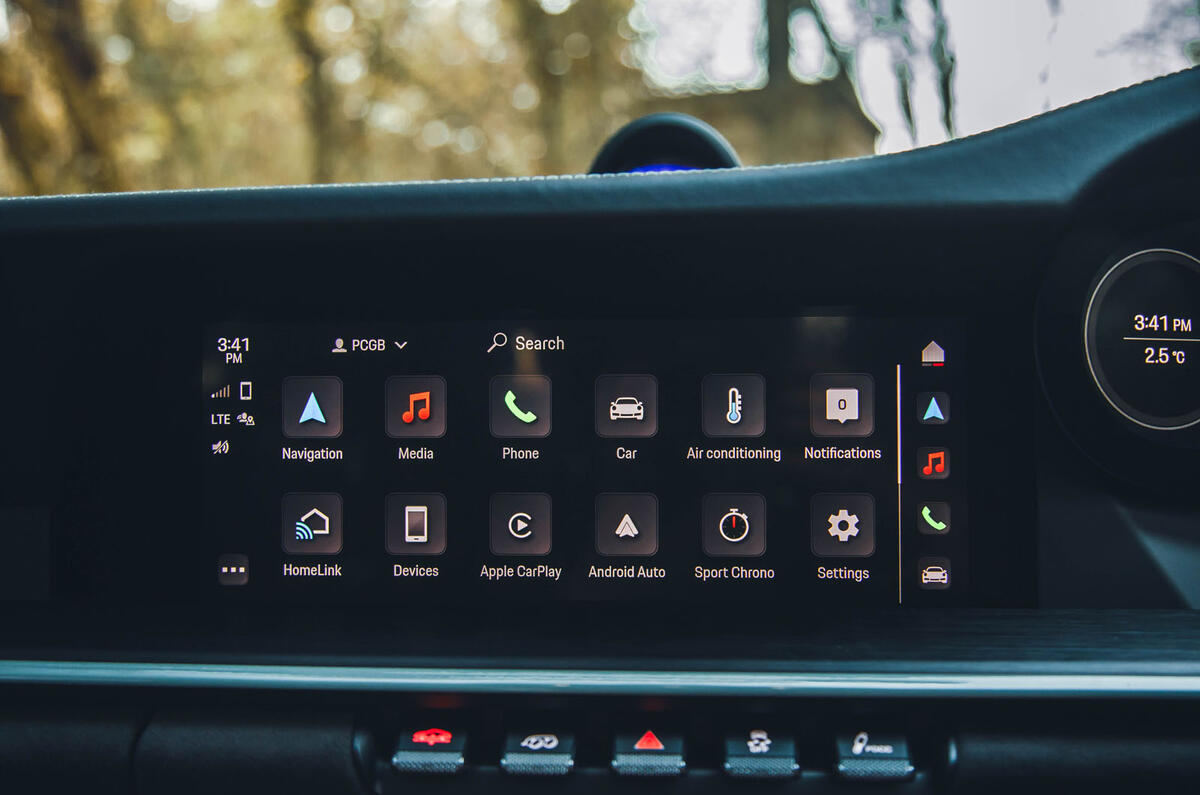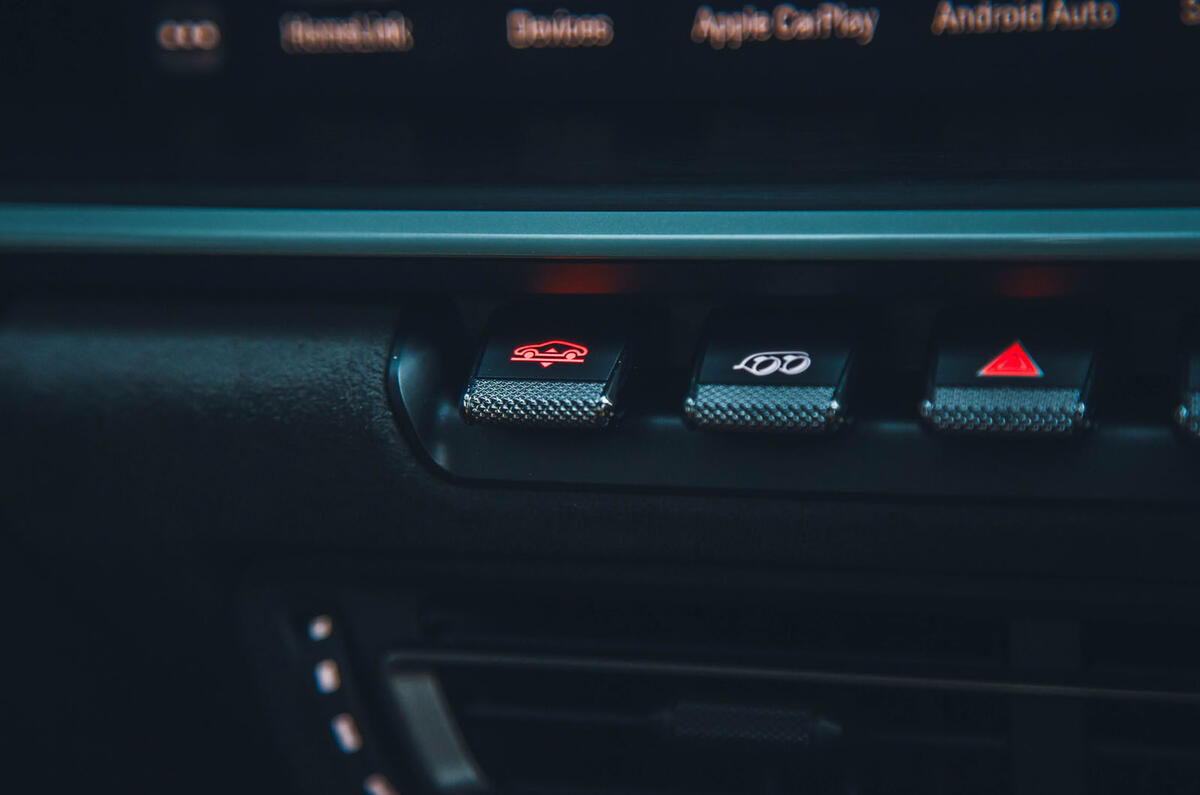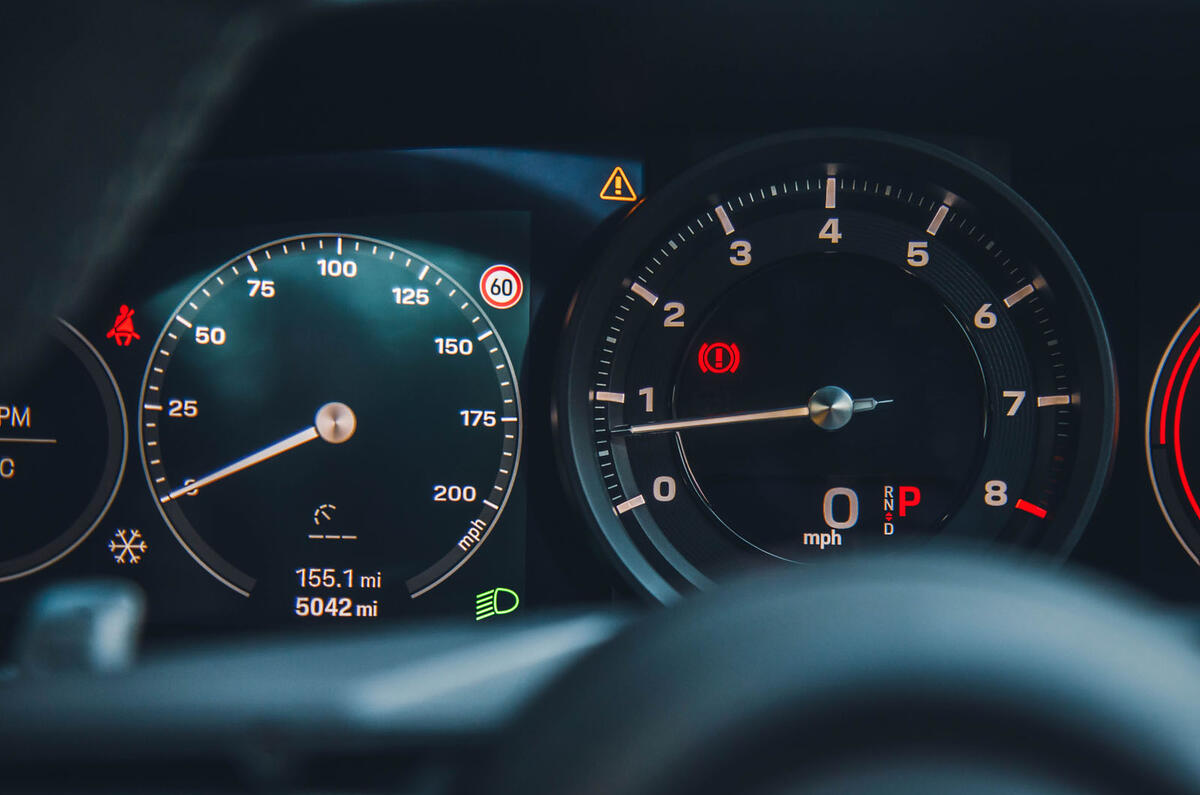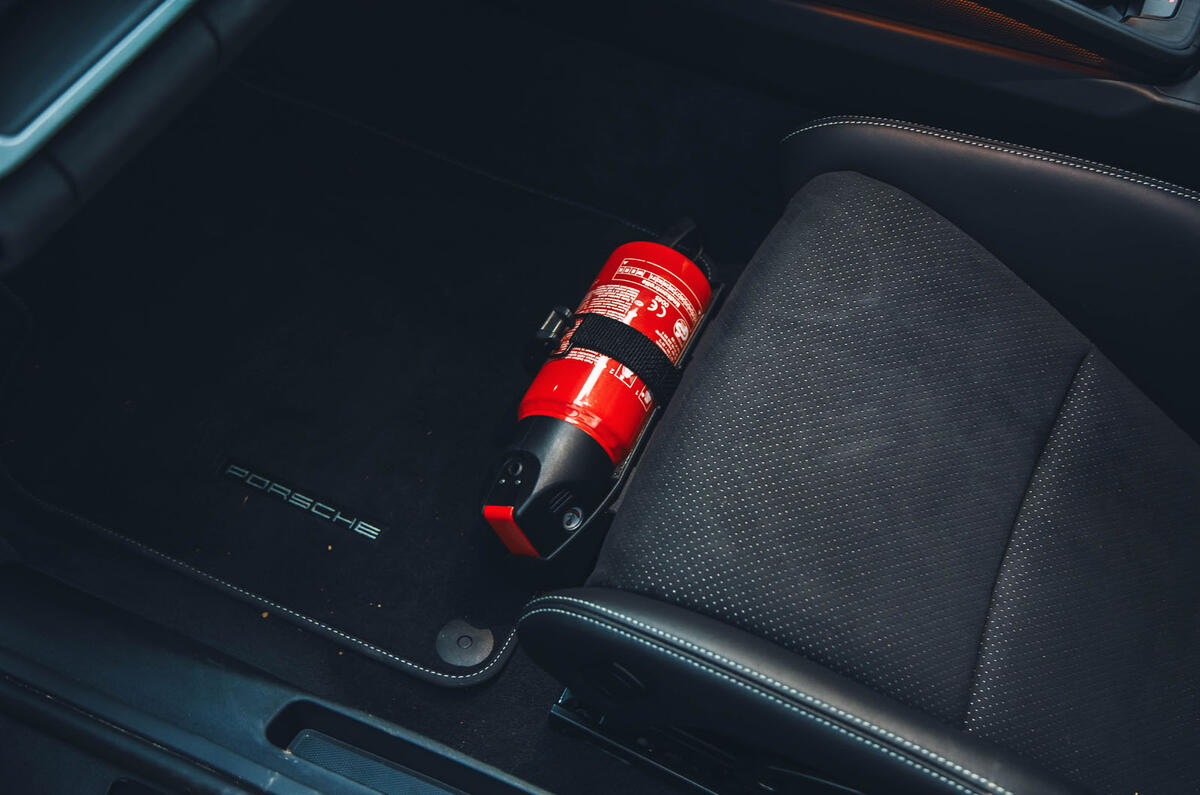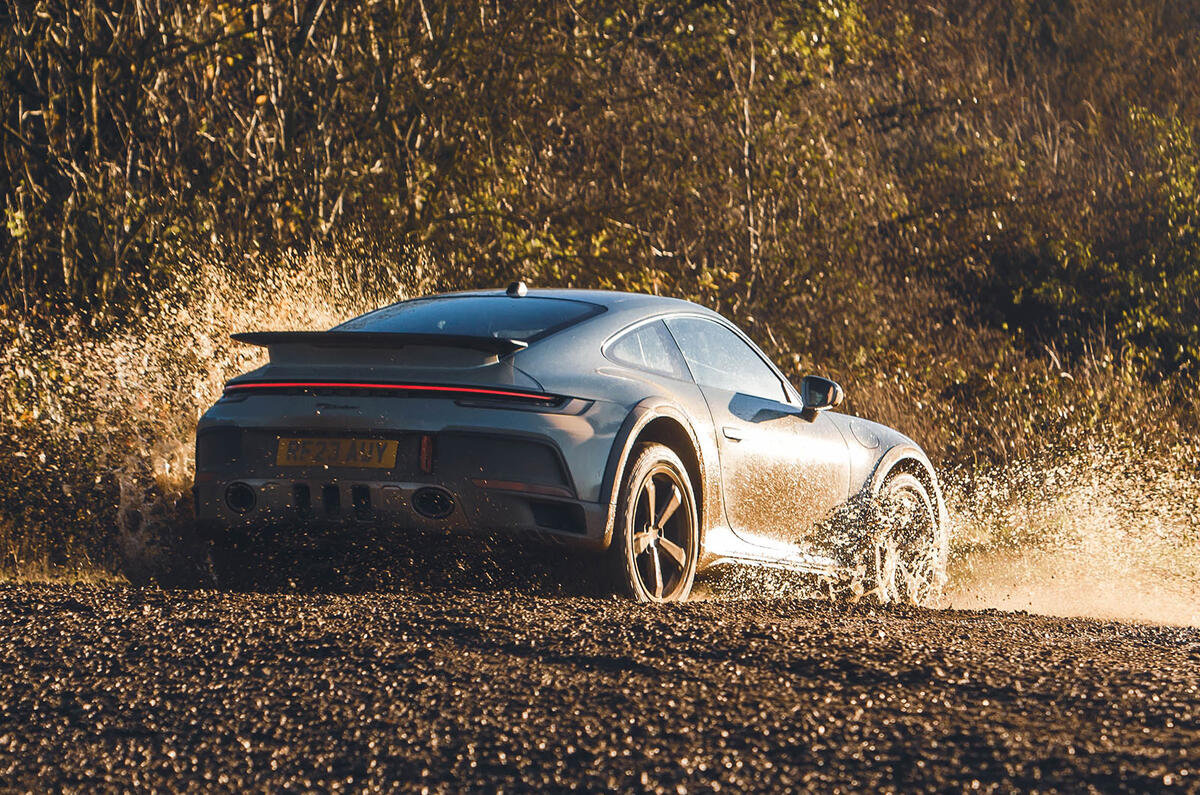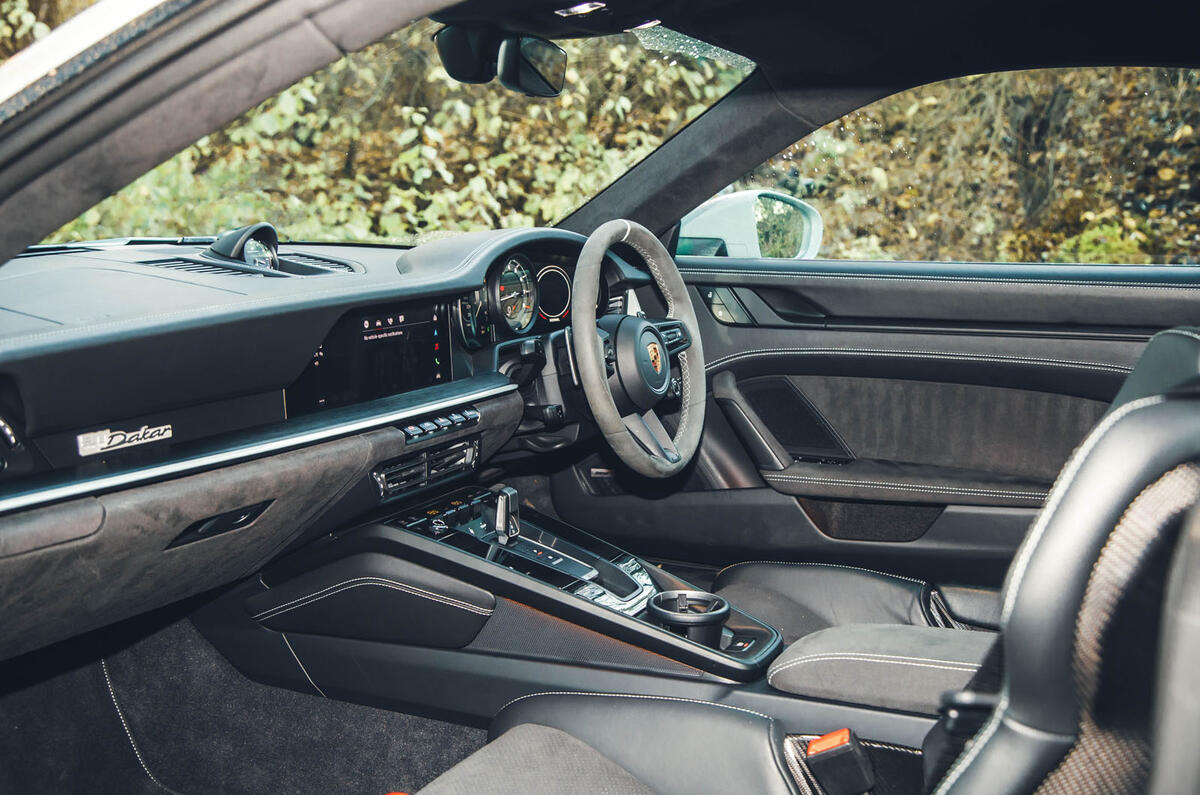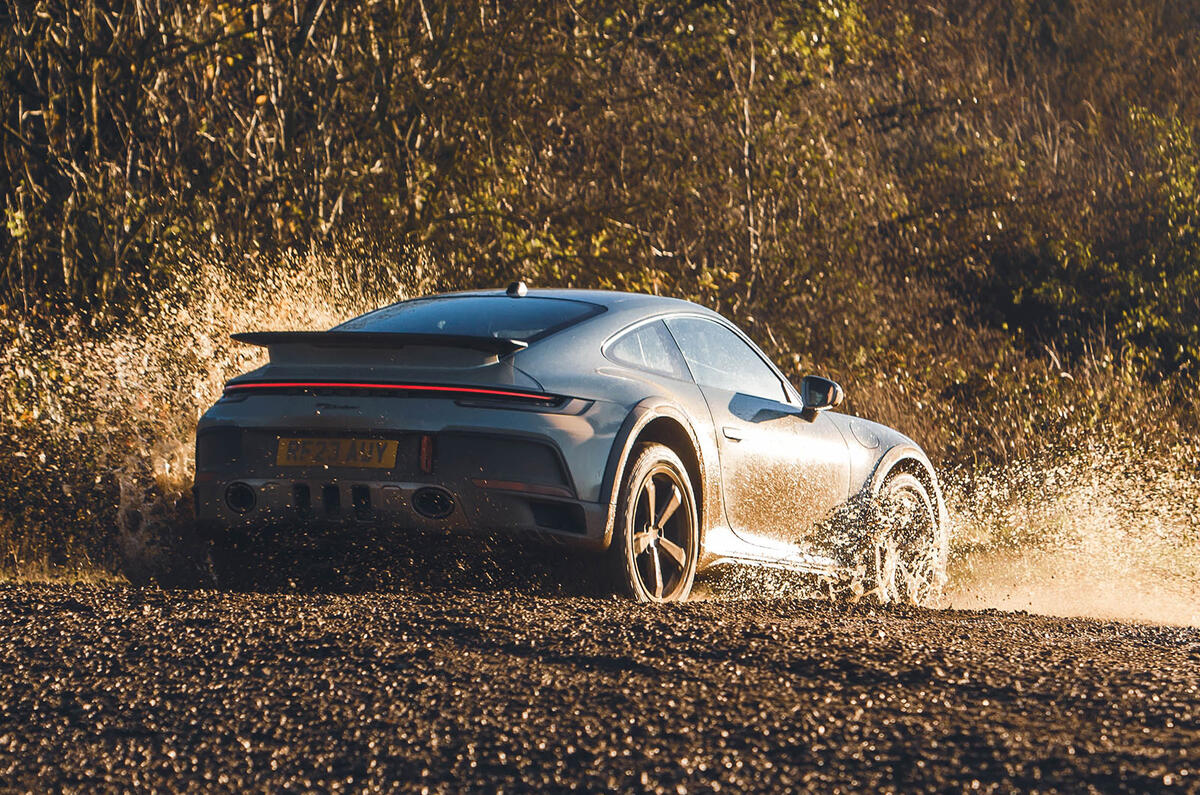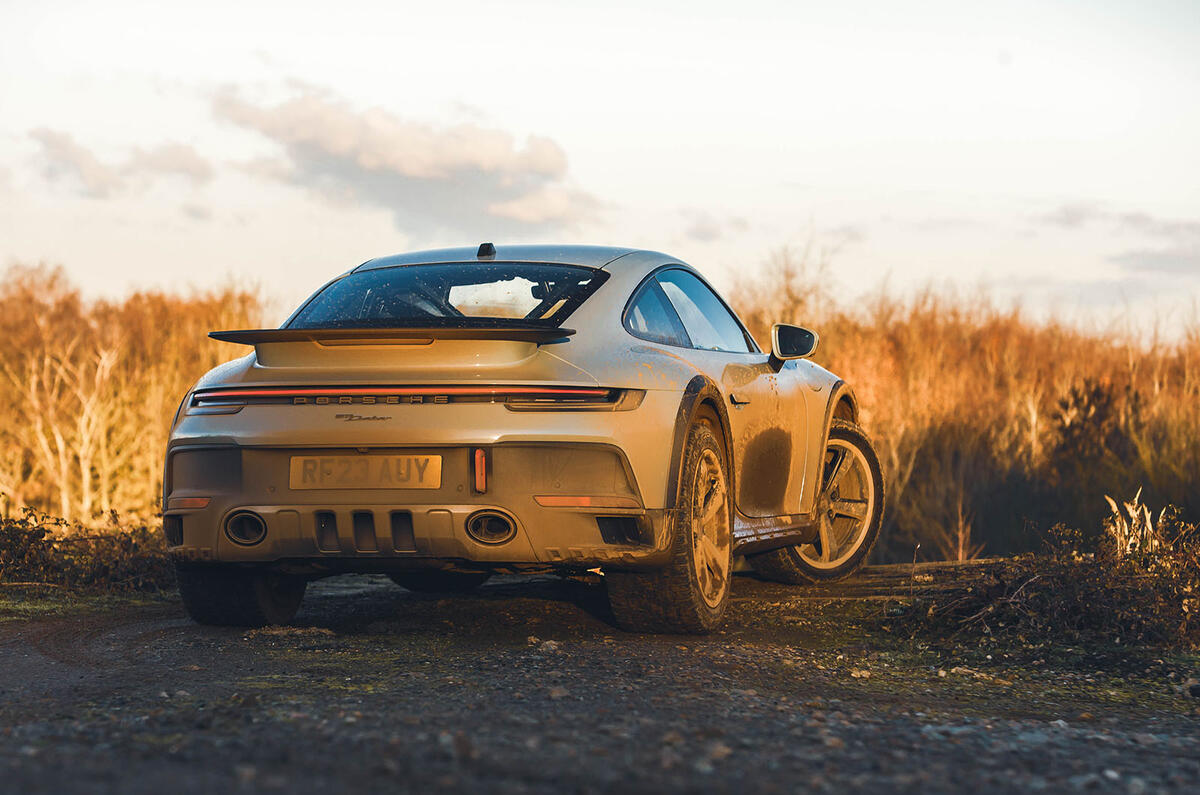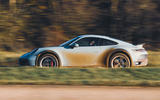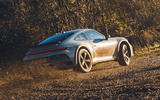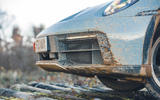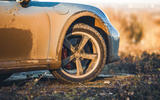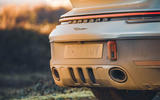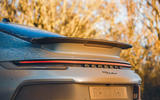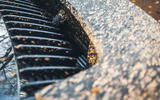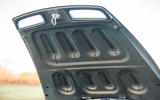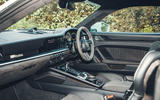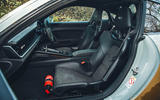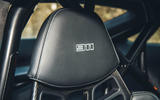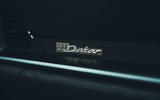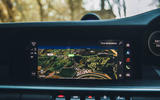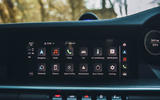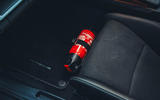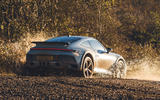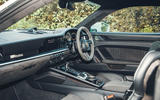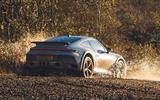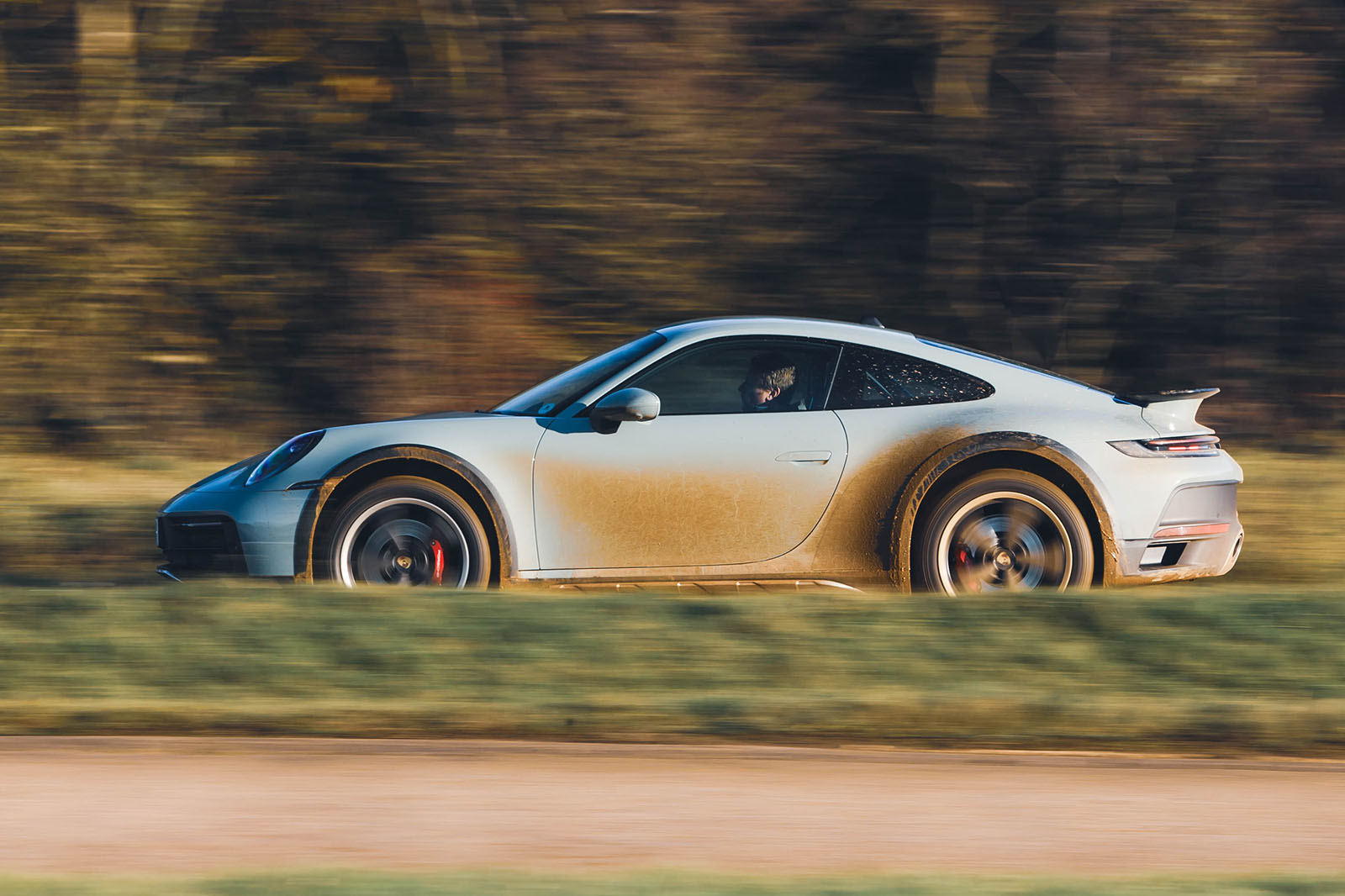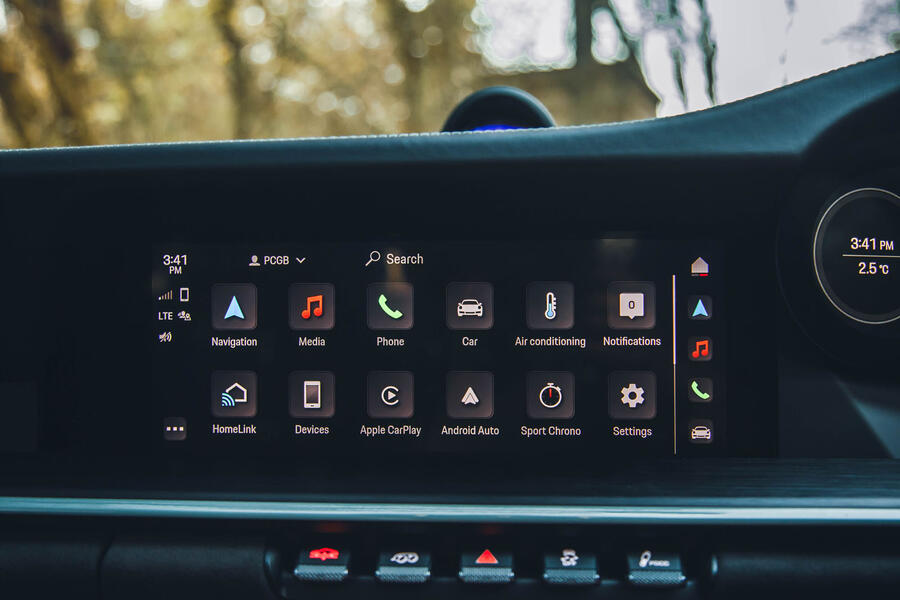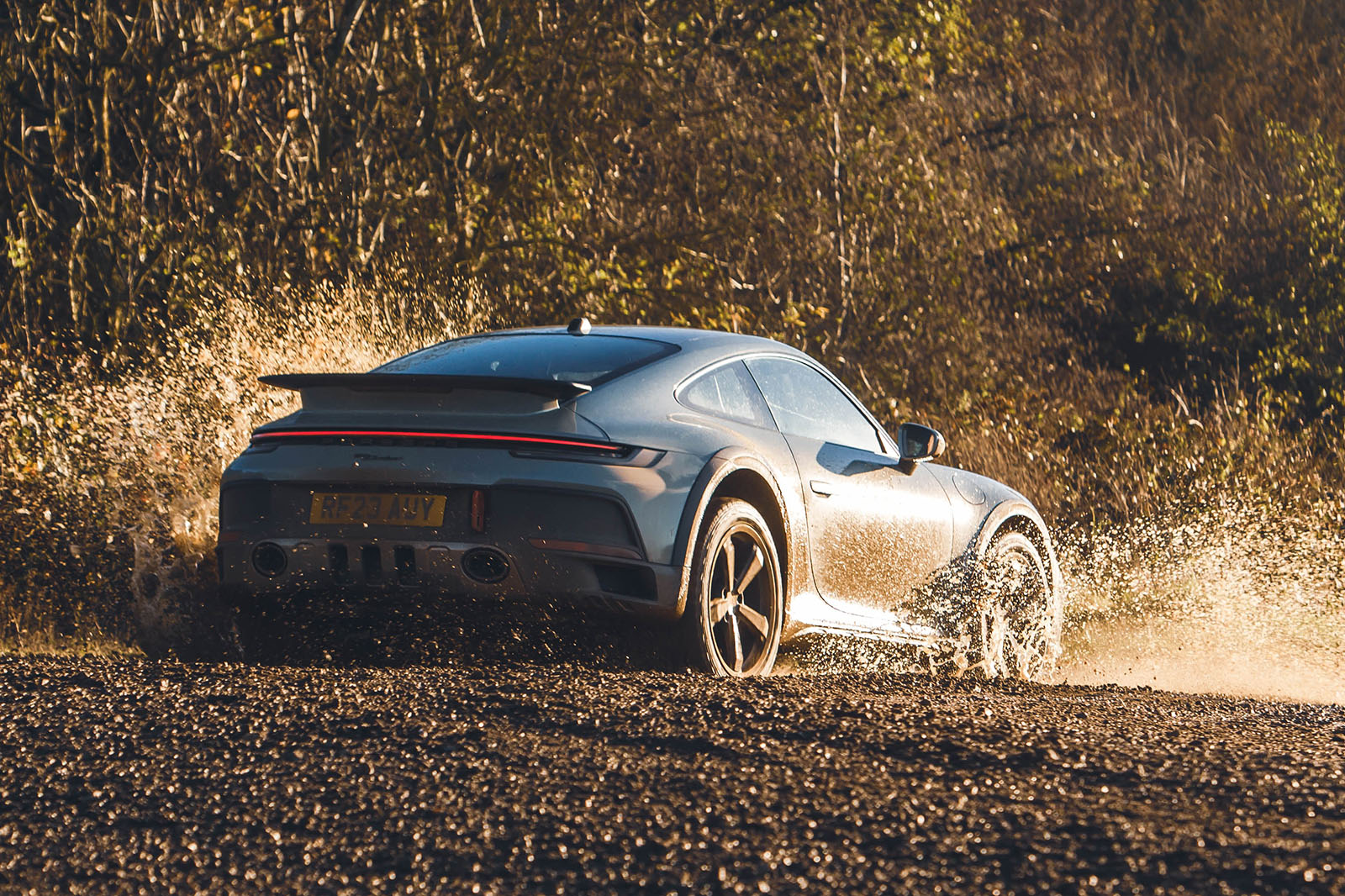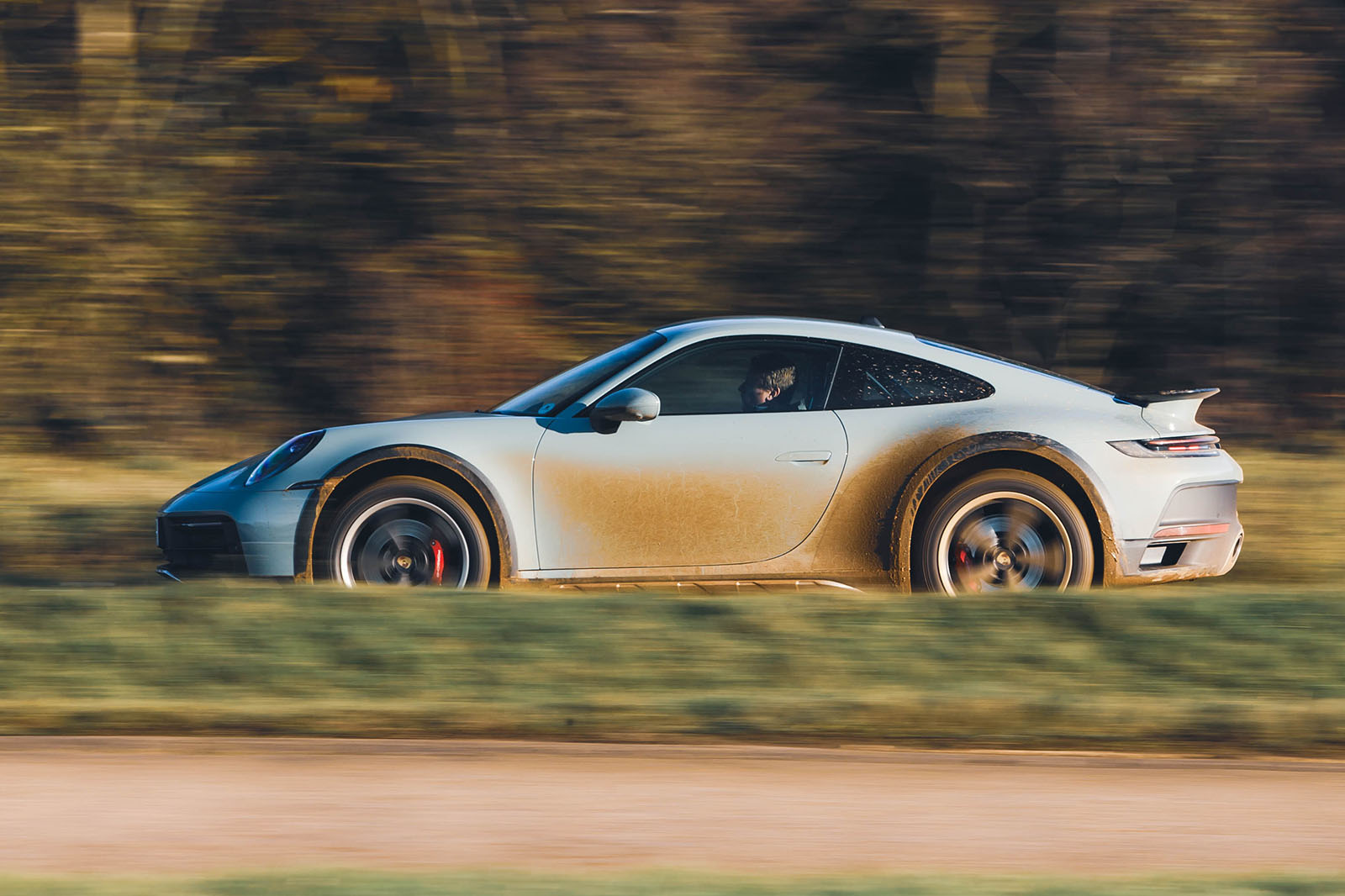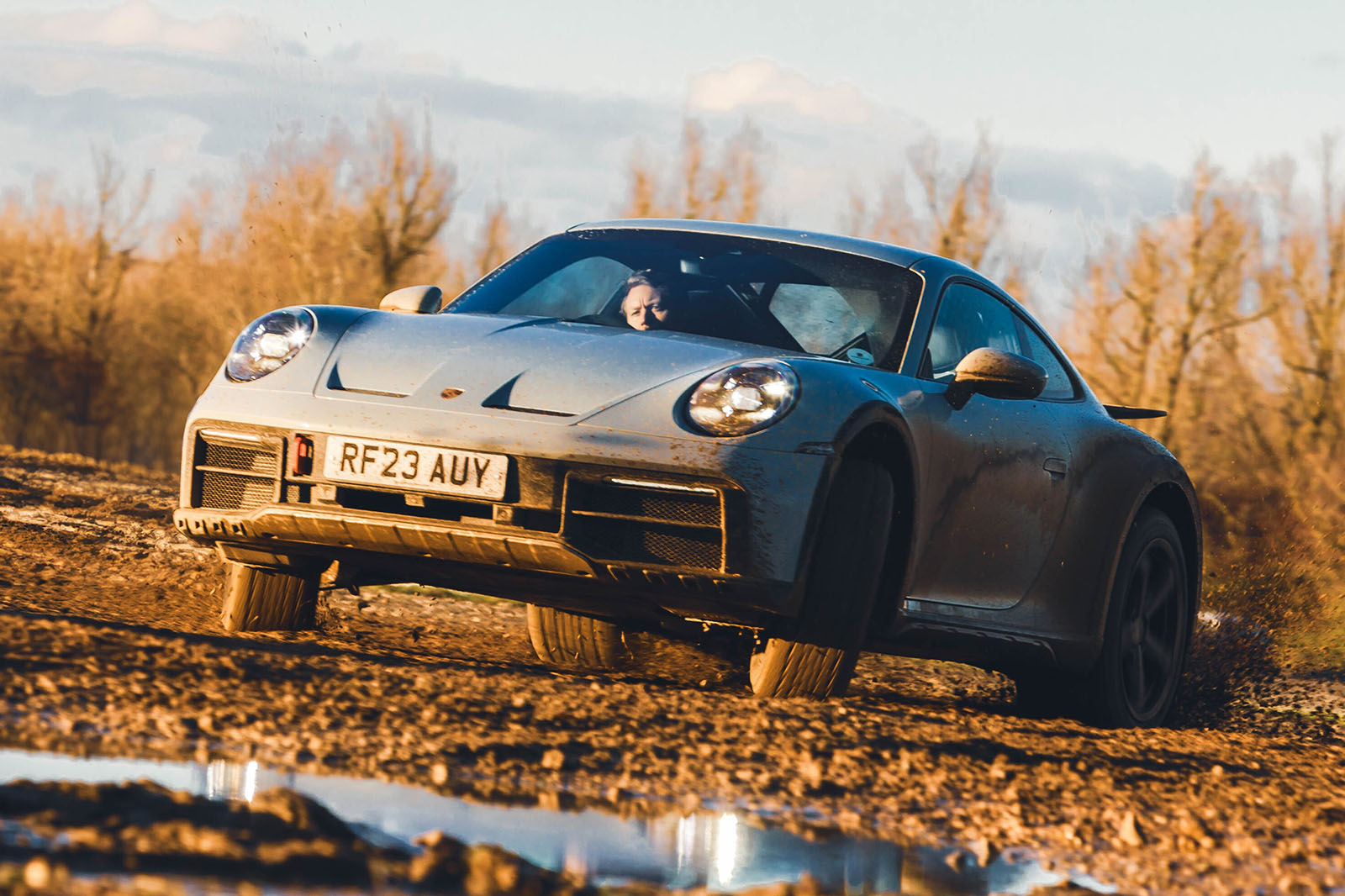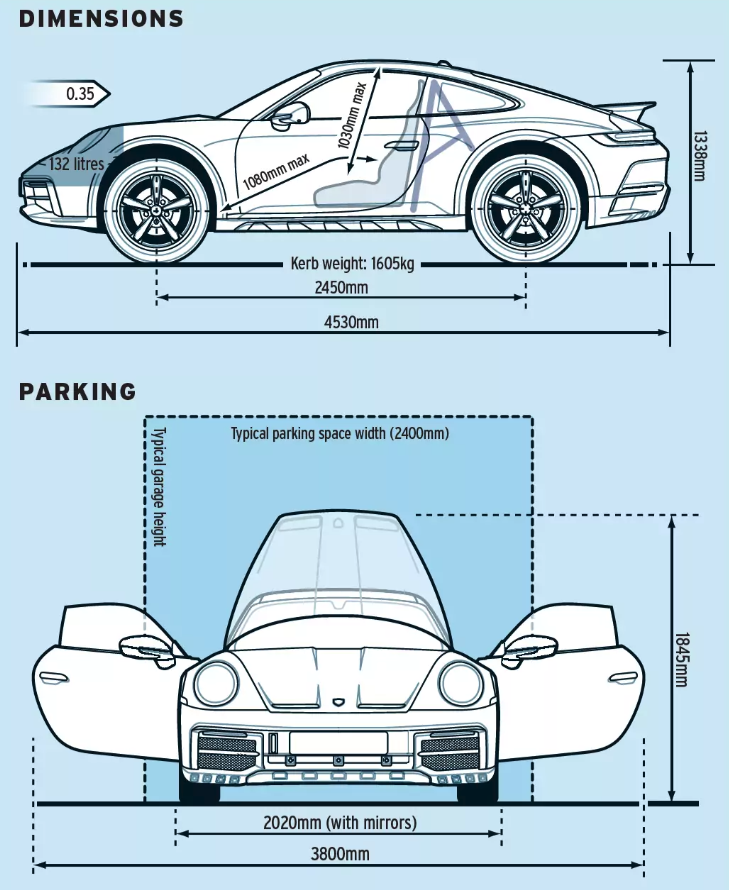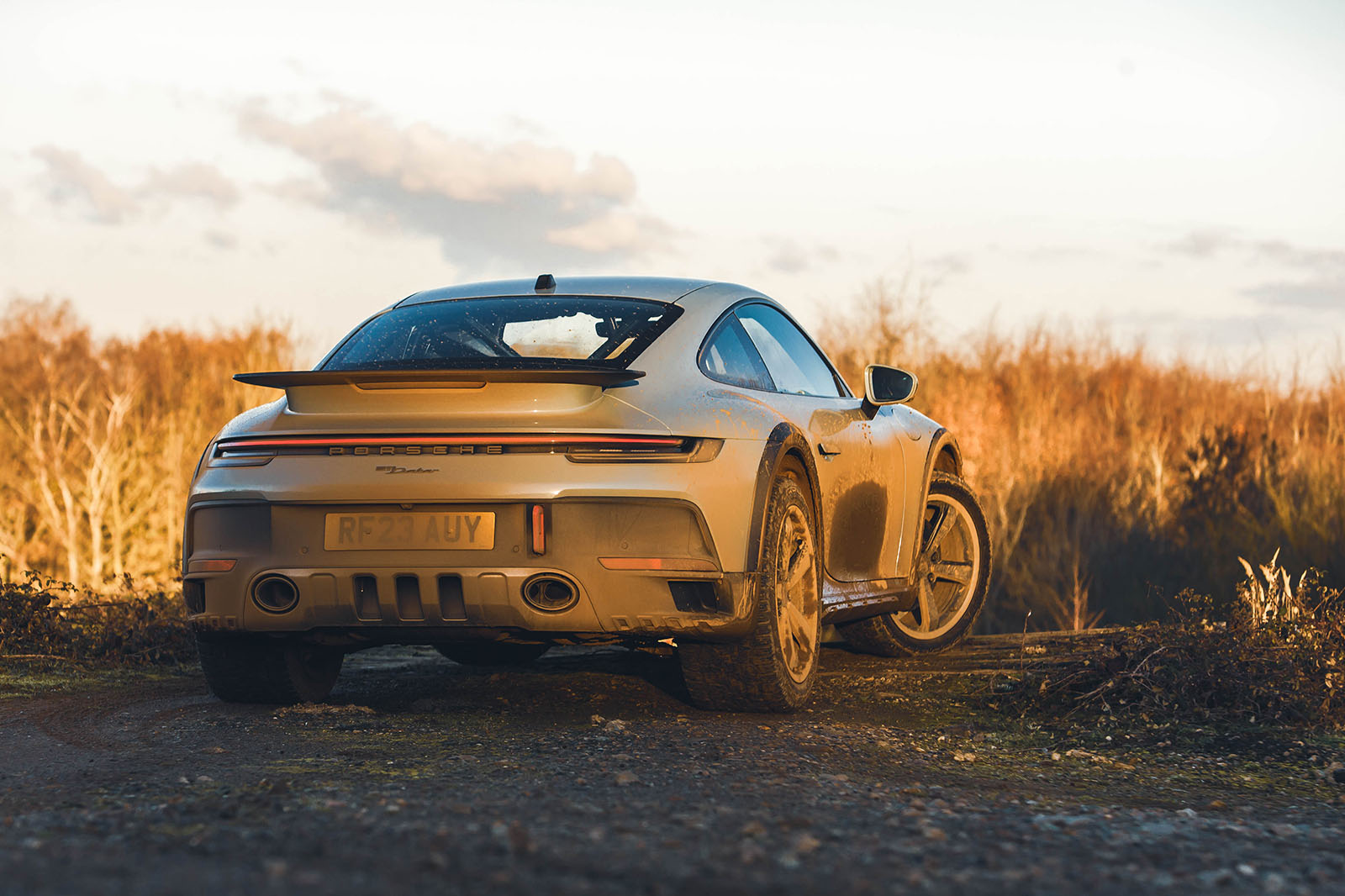In terms of top speed, you have to wind the clock back 41 years to the 1983 3.0-litre SC to unearth a 911 with a top speed lower than that of the Dakar.
But acceleration? That’s a different matter. We tested the car on a near-freezing cold day, when the traction potential of its all-terrain tyres would have been quite limited on Millbrook’s patchily damp asphalt, and yet by engaging its launch control function, the Dakar still turned in a 0-60mph time of just 3.3sec and burst into triple figures after only 7.6sec.
This makes it quicker than the Carrera S we tested in far kinder conditions in 2019, and even the recently retired R35 Nissan GT-R.
One has to assume that with ultra-high-performance summer tyres fitted, and in warmer conditions, the Dakar would get close to a 0-60mph time of 3.0sec – the current boundary for true supercar-grade performance. So don’t be fooled by the cartoonish looks: this is a truly rapid 911.
For those who want to indulge in casual competition activities, or who simply want to have some fun off road, the Dakar also has a specific Rallye launch control mode for loose surfaces, which permits up to 20% wheel slip.
As for personality, the Dakar is closely matched to the Carrera 4 GTS on which it is based. There is a touch more squat under initial acceleration and dive during hard braking, but not as much as you might expect in either regard, and the rapidity with which the eight-speed PDK gearbox switches cogs is as spectacular as ever.
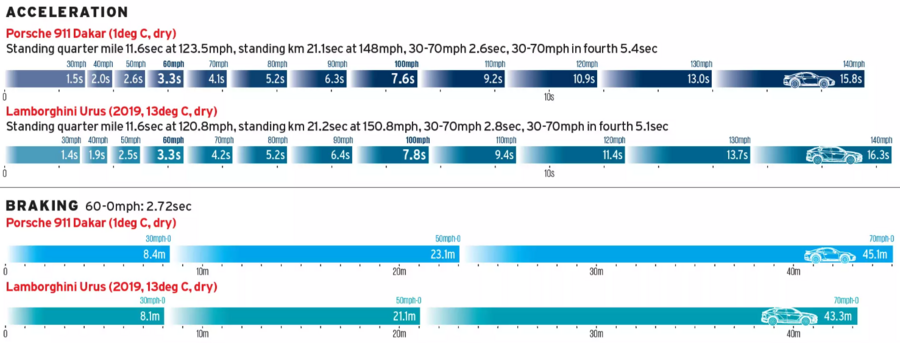
The effectiveness of this twin-turbo unit, whose boost grips the chassis and flings it forward early in the rev range, is matched by a surprisingly soulful top-end wail. It’s a fine match for the Dakar, with a broad band of torque and power paying dividends off road, where the car’s attitude can be adjusted at will.
Lastly, a word on braking performance. We were able to find a dry stretch of surface to perform brake tests and, predictably, the Dakar’s all-terrain tyres hampered it. Our car took 45.1m to haul up from 70mph. By comparison, the Carrera S took 39.8m and a Turbo S (on a summer’s day, admittedly) a mere 38.3m.
On the road, it pays to be aware of the Dakar’s limitations in this respect, and you are unlikely to forget about it because the initial pedal response has a somewhat woolly feel. Note also that the Dakar comes with model-specific cast-iron discs because Porsche’s carbon-ceramic alternatives don’t fit inside the wheels.
Off-road notes

Investigate the online forums and you will see Dakar owners are taking their cars down impressively challenging trails that would usually provide a light workout for something like a Jeep Wrangler.
Clearly, the Dakar’s all-terrain tyres, Cayenne- style ground clearance (when the suspension struts are extended) and 16mm-shorter front overhang compared with the regular 911 aren’t just for show, and while the underside isn’t entirely panelled, there is a fairly comprehensive level of protection that even extends to individual suspension links. The front rads also have specific stone-chip protection.
Our test car acquitted itself well on the perimeter road of Millbrook’s off-road course. Its wheel articulation allowed reasonable speeds to be sustained over rutted terrain without fear of damaging the underbody.
More notable still is the nature of the steering, which is precise on the road yet doesn’t have the rim writhing around when the going gets tough.


